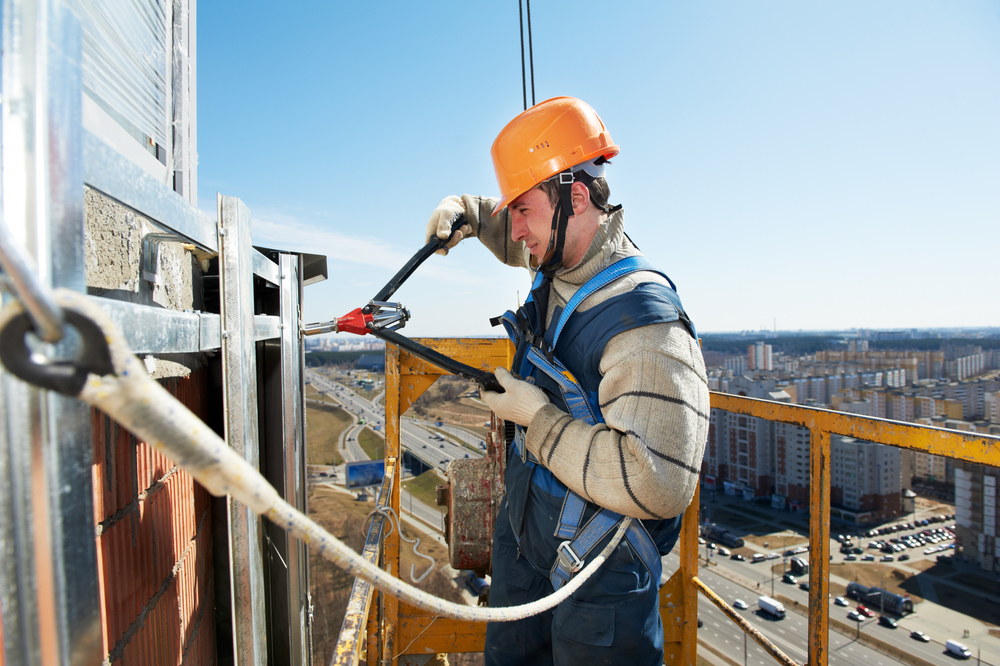What is Facade Work in Construction?
Facade work refers to the design, installation, and maintenance of the exterior front or face of a building. This aspect of construction is crucial as it significantly influences the building’s aesthetics, energy efficiency, and protection against environmental factors. Facades can be constructed from a variety of materials, including glass, stone, metal, and composite materials, depending on the architectural design and the intended purpose of the building.
The facade serves as the first impression of a building, establishing its identity and character. It is not merely a protective layer; it plays a multifaceted role in the overall functionality of a structure. The facade is designed to withstand various environmental stresses while also contributing to the building’s energy performance and sustainability.
Why is Facade Work Important in Construction?
Facade work is vital for several reasons:
- Aesthetic Appeal: The facade gives the building its identity, contributing to its overall architectural style. A well-designed facade can enhance the visual appeal of a building, making it stand out in its surroundings.
- Energy Efficiency: A well-designed facade can improve a building’s energy efficiency by providing insulation and controlling solar gain. This can lead to reduced energy costs and a smaller carbon footprint.
- Protection: The facade protects the building structure from external elements such as wind, rain, and temperature variations. It acts as a barrier, preventing moisture intrusion and ensuring the longevity of the building materials.
What are the Common Materials Used in Facade Construction?
Facade construction can involve a variety of materials, each offering different benefits:
- Glass: Offers transparency and a modern look, commonly used in curtain walls. Glass facades can enhance natural light within the building while providing a sleek exterior.
- Stone: Provides durability and a traditional appearance, often used in classical architecture. Stone facades are known for their strength and timeless aesthetic.
- Metal: Lightweight and versatile, metal facades can create contemporary designs. They are resistant to weathering and can be finished in various colors and textures.
- Composite Panels: These panels offer flexibility in design and are often used for their lightweight and insulating properties. Composite materials can be engineered to meet specific performance criteria.
What are the Different Types of Facade Systems?
Facade systems can be categorized into several types, each with unique characteristics:
- Curtain Wall Systems: These are non-structural cladding systems that are hung from the building structure. They allow for large expanses of glass and are often used in high-rise buildings.
- Cladding Systems: Involves applying one material over another to provide a skin or layer intended to control the infiltration of weather elements. Cladding can be made from various materials, including wood, metal, and vinyl.
- Ventilated Facades: These systems create a gap between the facade and the building’s exterior walls, allowing air to circulate and providing better thermal insulation. This design helps in managing moisture and improving energy efficiency.
How Does Facade Design Impact Energy Efficiency?
Facade design can significantly influence a building’s energy consumption. Key design elements include:
- Orientation: The positioning of the facade relative to the sun is crucial for maximizing natural light and minimizing heat gain. Proper orientation can enhance the building’s passive solar heating capabilities.
- Insulation: Using materials that provide thermal resistance is essential to reduce heating and cooling costs. High-performance insulation can prevent heat loss in winter and reduce heat gain in summer.
- Shading Devices: Incorporating elements like louvers or overhangs can help control solar gain and glare, improving indoor comfort and reducing reliance on mechanical cooling systems.
What are the Challenges in Facade Construction?
Facade construction presents several challenges, such as:
- Structural Integrity: Ensuring that the facade can withstand environmental stresses like wind loads and thermal expansion is critical. The design must account for these factors to prevent structural failure.
- Weatherproofing: Designing the facade to prevent water infiltration and manage condensation effectively is essential for protecting the building’s interior and maintaining its integrity.
- Material Compatibility: Selecting materials that are compatible with the building structure and the environmental conditions is crucial. Incompatible materials can lead to deterioration and increased maintenance costs.
How is Facade Maintenance Managed?
Regular maintenance of the facade is essential to preserve its appearance and functionality. Maintenance tasks include:
- Cleaning: Regular washing of the facade to remove dirt and pollutants is necessary for aesthetic upkeep and to prevent material degradation.
- Inspection: Periodic checks for signs of wear, corrosion, or damage can help identify issues early, allowing for timely repairs.
- Repairs: Addressing any structural or aesthetic issues promptly is vital to prevent further deterioration and maintain the building’s integrity.
What Role Do Facades Play in Sustainable Building Practices?
Facades are crucial in sustainable architecture by:
- Reducing Energy Consumption: Through proper insulation and design, facades help minimize the building’s reliance on artificial heating and cooling, thus lowering energy bills.
- Using Sustainable Materials: Incorporating eco-friendly materials like recycled metal or sustainably sourced wood in facade construction contributes to environmental conservation.
- Enhancing Indoor Environmental Quality: Intelligent facade design can control light, temperature, and air quality, creating healthier indoor environments for occupants.
What Innovations are Emerging in Facade Technology?
Recent advancements in facade technology include:
- Smart Facades: Incorporating technology that allows the facade to adapt to environmental changes. Dynamic shading systems can adjust to sunlight levels, optimizing energy use.
- Green Facades: Using vegetation as part of the facade can improve air quality and reduce urban heat islands. These facades provide insulation and promote biodiversity.
- 3D-Printed Facades: Utilizing 3D printing technology enables the creation of complex facade designs that were previously impossible or too costly to achieve. This innovation allows for greater customization and efficiency in construction.
How Much Does Facade Work Typically Cost?
The cost of facade work can vary widely based on several factors:
- Material Choice: High-end materials like natural stone or custom glass will increase costs. The selection of materials directly impacts both the aesthetic and functional qualities of the facade.
- Complexity of Design: More intricate designs or larger surface areas will require more labor and materials, affecting the overall cost of the project.
- Location: Costs can also be influenced by the building’s location, including local labor costs and the availability of materials. Urban areas may have higher costs due to increased demand and logistical challenges.
FAQs:
Q: How long does facade work usually take?
A: The duration of facade work depends on the complexity of the design, the size of the building, and the materials used. It can range from a few weeks for simple projects to several months for larger, more intricate facades.
Q: Can facades be retrofitted to older buildings?
A: Yes, facades can be retrofitted to improve energy efficiency, update the building’s appearance, or repair structural issues. Retrofitting can enhance the building’s performance and extend its lifespan.
Q: What are the environmental benefits of using green facades?
A: Green facades can reduce energy consumption, improve air quality, and contribute to biodiversity in urban areas. They provide insulation and can help mitigate the urban heat island effect.
In conclusion, facade work in construction is a multifaceted discipline that encompasses a variety of materials, designs, and technologies. Its importance extends beyond aesthetics, playing a crucial role in energy efficiency, protection, and sustainability. As innovations continue to emerge, the potential for facades to enhance building performance and contribute to environmental goals will only increase, making facade work a vital aspect of modern construction practices.


Leave a Reply